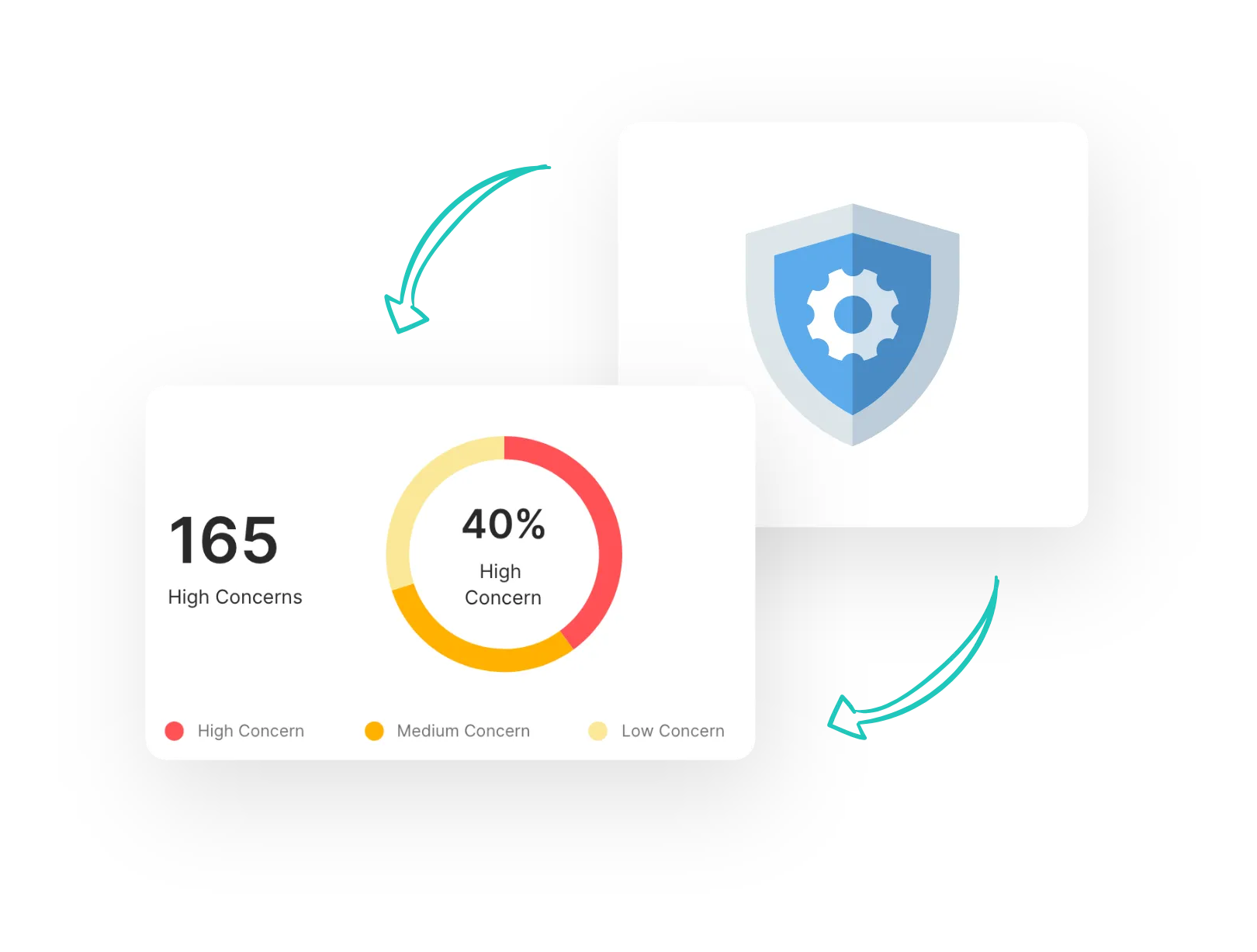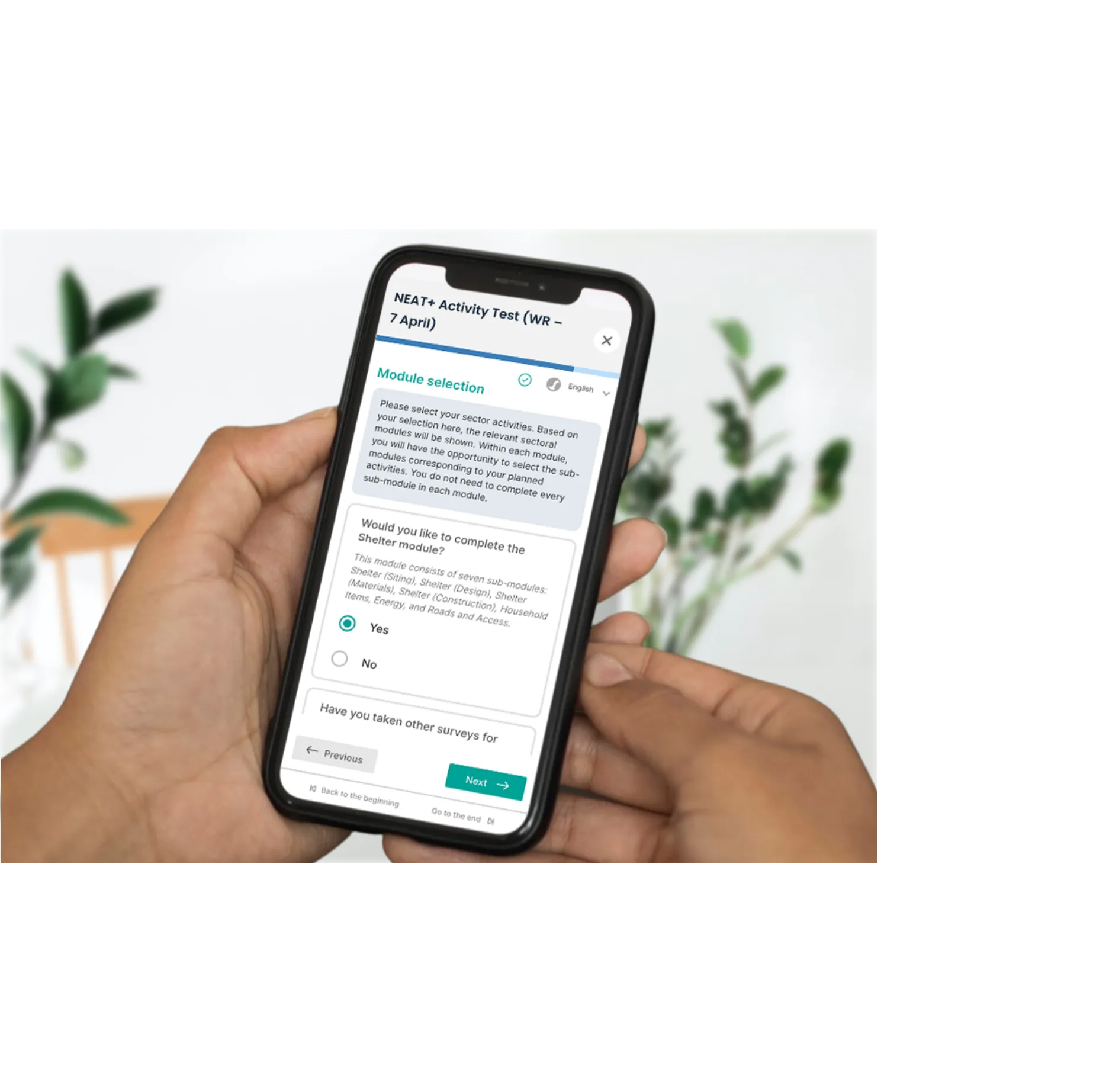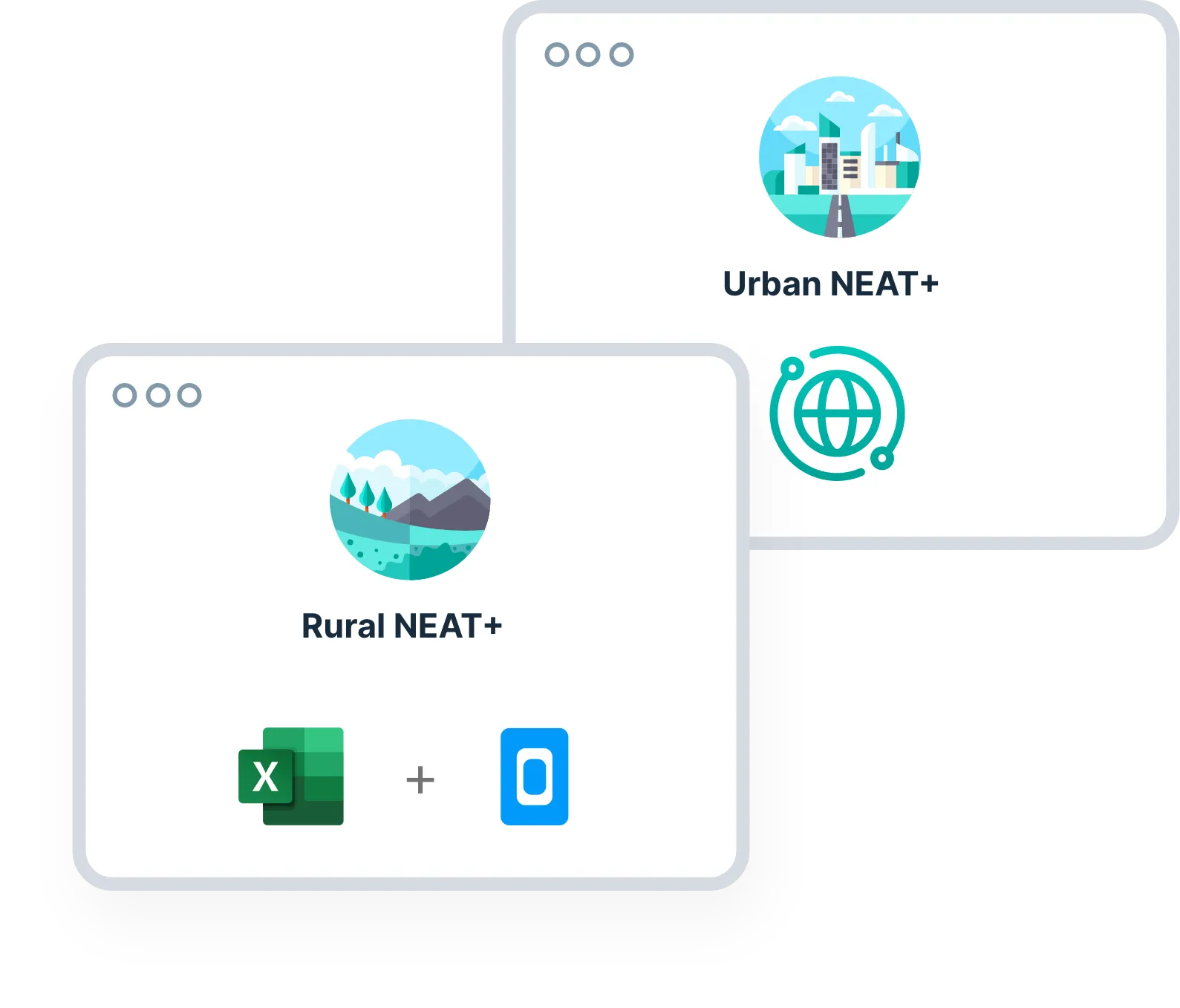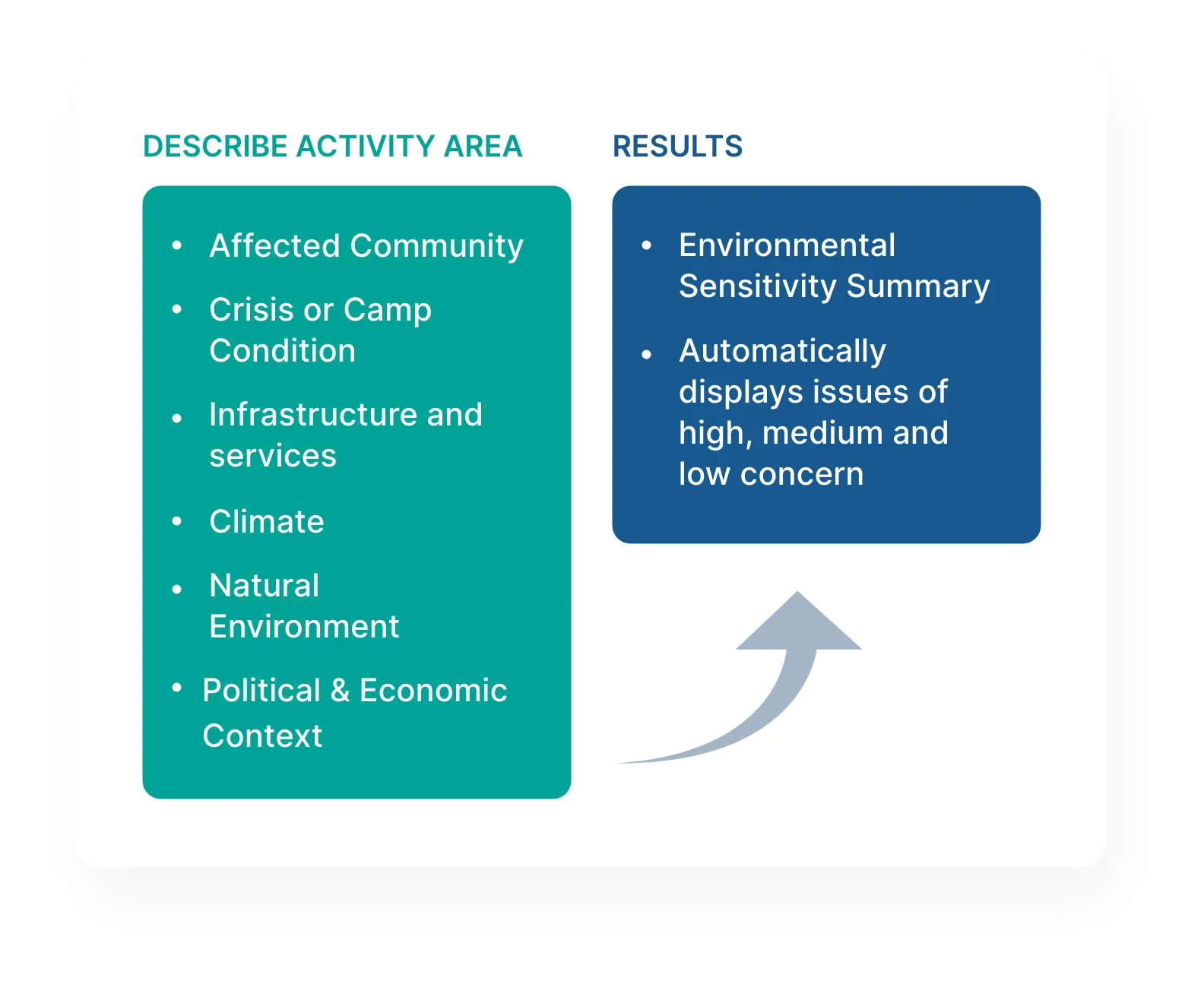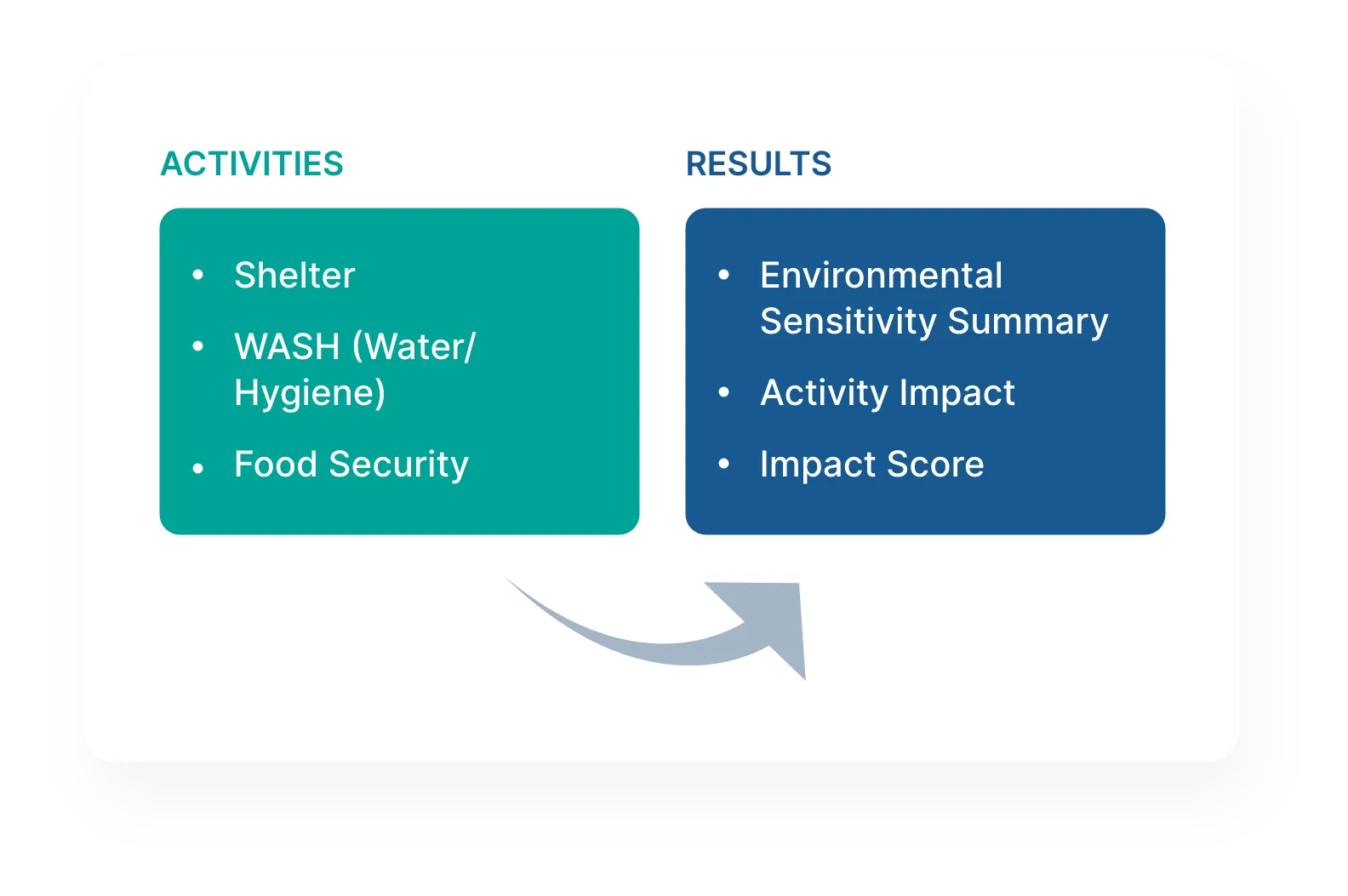STEP 1Access the NEAT+
Decide whether you wish to use the Urban or Rural version of the NEAT+. You can decide using the "Access the NEAT+" page of this website. The analysis of the Rural NEAT+ is completely performed in Excel, the files for which can be downloaded on this page. Kobo Toolbox can be optionally used to more easily collect data offline and to aggregate data at a project or organizational level. The Urban NEAT+ can be accessed directly from this site on "Access the NEAT+".
STEP 2Complete Environmental Sensitivity Module
The Environmental Sensitivity Module consists of questions about the activity area, and should take 30 minutes - 1 hour to complete. It must be completed before the Activity Modules. When completed, the ES Module generates a summary report including risks of high, medium, and low concern, humanitarian environmental mitigation tips, relevant resources and linked potential development opportunities. In Urban NEAT+, the summary report is available in a summarized and detailed view.
STEP 3Complete Activity Module(s) (optional)
Rural and Urban NEAT+ currently have activity modules for Shelter, WASH and Food Security. Urban NEAT+ has an additional active Livelihood module, and Health and Waste activity modules are still being developed. Within the Activity Modules, you can select which optional sub-modules to complete; each sub-module consists of 10-20 questions. When these are completed, an activity summary report is generated, which uses the output from the environmental sensitivity report and the answers provided in the activity sub-modules to assess the potential environmental impacts of the activity and suggest humanitarian environmental mitigation tips, relevant resources and potential development opportunities. In the Urban NEAT+, the activity summary reports are available in a summarized and detailed view.
